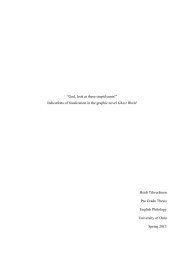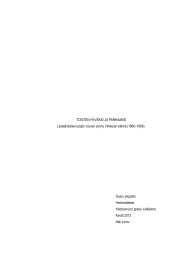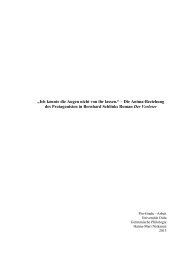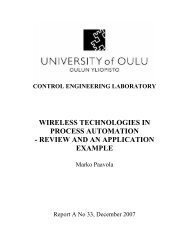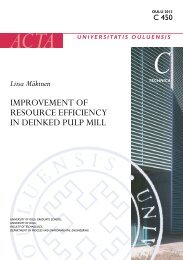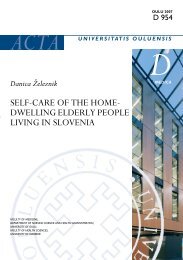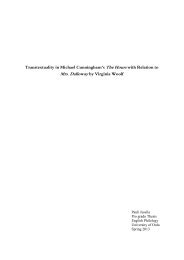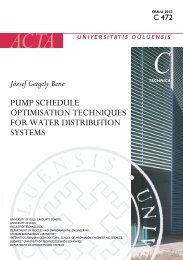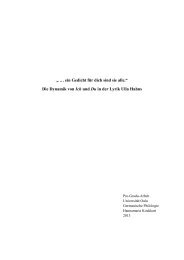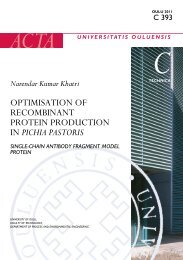Hassan Sherwani ROLE OF SALES AND MARKETING IN ... - Oulu
Hassan Sherwani ROLE OF SALES AND MARKETING IN ... - Oulu
Hassan Sherwani ROLE OF SALES AND MARKETING IN ... - Oulu
Create successful ePaper yourself
Turn your PDF publications into a flip-book with our unique Google optimized e-Paper software.
15<br />
produced but, resources to generate that electricity are scarce. Moreover, some of those<br />
resources such as fossil fuels were creating more pollution to environment. There is a<br />
serious need to reduce carbon dioxide emission by either generation energy through<br />
alternative ways or by decrease in overall electricity consumption. For alternative ways<br />
such as sun, wind, hydro, geo-term, and tide energy are environment friendly and that’s<br />
why they are referred as green energy resources. The other way to decrease consumption<br />
comes to end consumer where they should realize the whole global environmental<br />
situation so they may limit the use of surplus energy.<br />
Both the increase in industry efficiency and reduction of carbon dioxide emission leads<br />
to regulation and reregulation issues. There are many electricity organizations which<br />
were earlier owned by state-owned companies are now being liberated and are becoming<br />
market driven companies. Moreover, the use of green energy requires re-regulation<br />
because these forms of energy generation are still new and are in process of research and<br />
development and therefore, they are more expensive than energy produced through<br />
traditional fossil fuels. It is environmental friendly but not pocket-friendly and there is a<br />
threat that companies might not switch to them at all. It is therefore necessary to<br />
implement some kind of subsidy scheme for the use of green energy (Kartseva et al,<br />
2004). To understand how electricity industry works, Borenstein and Bushnell (2000)<br />
describe three distinct components of it: generation, transmission, and distribution. Once<br />
electricity is generated, whether by burning fossil fuels, harnessing wind, solar, or hydro<br />
energy, or through nuclear fission, it is sent through high-voltage, high-capacity<br />
transmission lines to the local regions in which the electricity will be consumed. When<br />
the electricity arrives in the region in which it is to be consumed, it is transformed to a<br />
lower voltage and sent through local distribution wires to end-use consumers.<br />
2.2 Energy business in Finnish Context<br />
Finland’s energy market has been fully liberated since 1995 right down to the level of<br />
the individual private consumer. Sales, production, transmission and distribution are<br />
considered to be separate functions. In addition, this deregulation of energy sector has<br />
transformed vertically integrated sector of energy into different businesses. Though<br />
electricity has been liberated through Electricity Market Act in Finland yet transmission



